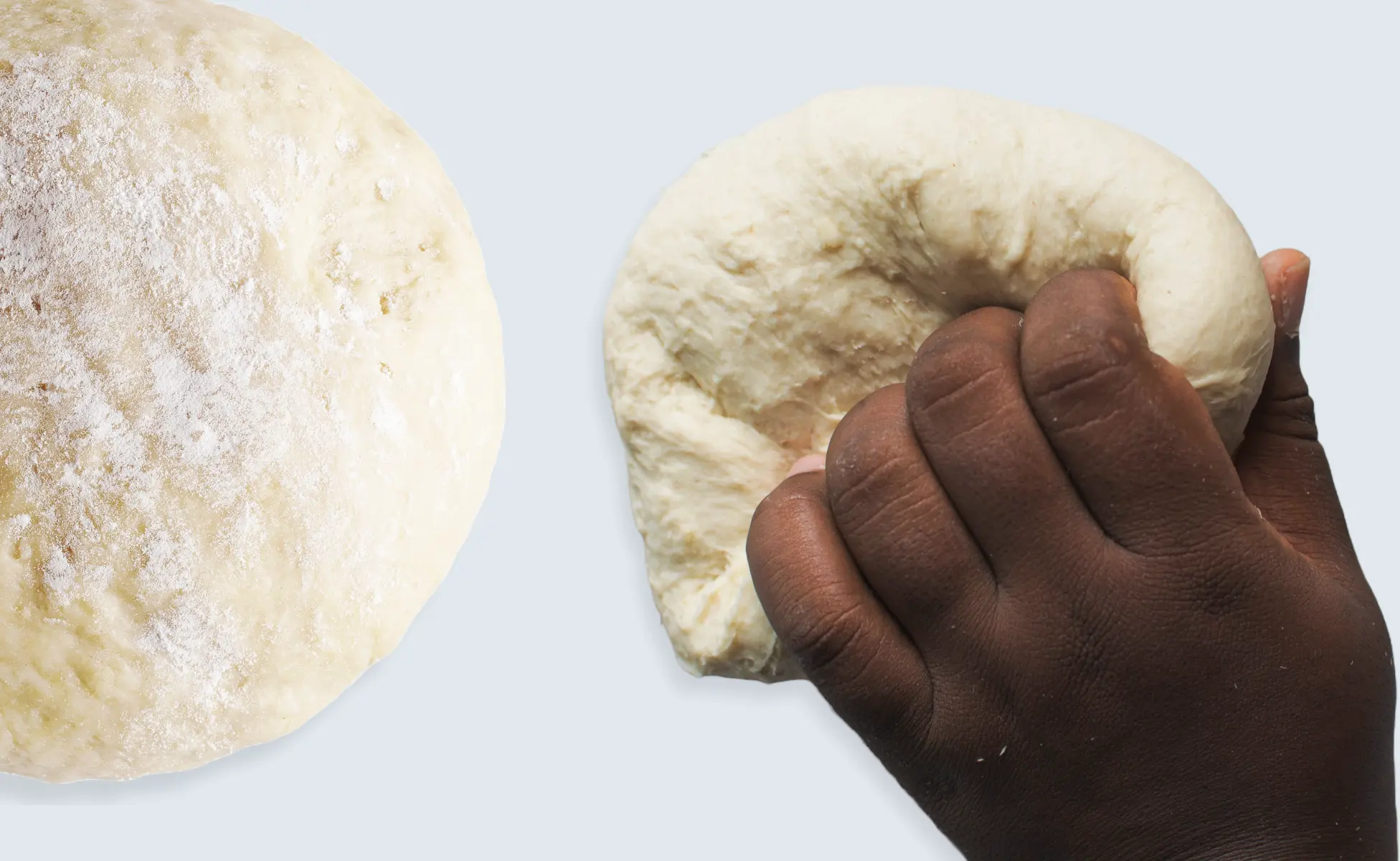The Science Behind Dough Extensibility

Defining Extensibility
Extensibility is a material's ability (in our case, dough) to stretch without breaking.
CAUTION: Extensibility should not be confused with elasticity! These are two different concepts. Dough can be extensible and not elastic or extensible and very elastic...and in bread making, the results will be quite different. In the following, we only discuss extensibility.
Let us use the example of a pizza or tortilla (wrap) manufacturer. At a specific point in the process, a ball of dough will be flattened in order to give it the desired diameter (via stamping or rolling). If, for whatever reason, the dough lacks extensibility, the product will end up too small. If, on the contrary, it is too extensible, it will end up too big. In either case, this can pose a problem, particularly for industrial processes.
So How do we Measure Dough's Extensibility?
Extensibility is directly measured using the Alveolab. During the deformation of the ball, it stretches to where it reaches its breaking point. This corresponds to the "L" or "G" value on the Alveograph.



When the vial was positioned higher up, the water began to floe due to gravity and fill the bulb by pushing the air up (displacing the air in the bulb) and towards the dough piece. When the bubble burst, the test was stopped and the quantity of water in the bulb was measured. To make it easier to read, the bulb was directly calibrated to an inflation unit,"G," based on the volume of water displaced. We should note that during this time, there was no curve and no other parameters but G...the Alveograph is, first and foremost, a tool for measuring extensibility.
When the machine was modernized, this hydraulic system was replaced by a stylus writing on a drum rotating at a linear speed of 5.5 mm per second. The measurement of the distance traveled by the stylus before the bubble burst, replaces the measurement of the volume of water displaced and, as such, the "L" was born.
The relationship between G and L is:

What About the Protein?
Extensibility depends primarily on protein quantity but more so quality, and we see that stretching the dough into a bubble shape extends the gluten network in three directions. This reproduces:
- The baker's movement when he or she wants to "see" the gluten network by stretching the dough manually.
- This will occur in the dough's cells for yeast (leavened) products.
Constant Hydration vs. Adapted Hydration
The Alveolab allows you to take measurements at constant hydration or adapted hydration. At constant hydration, there is very strong competition between the flour's various components to soak up the available water. Because of this, protein (less hygroscopic than damaged starch, for example) can be relatively under-hydrated. This is one of the reasons why some consider the constant hydration test as being more penalizing. This is partly true, but we must also take into consideration that at the same hydration, dough with a longer "L" reveals, all other things being equal, a higher level of extensibility.
The adapted hydration test allows you to deliver more water to the protein which will allow it to better express its potential. We have measured the variation of extensibility between the two protocols (LAH minus L) in a study of 150 flours, and have compared it to the hydration used for the constant hydration test. We came up with four quadrants .

- Quadrant A on the upper right: the flour has a high level of hydration and, under these conditions, demonstrates a higher level of extensibility. We notice that, for similar hydration levels, the increase in "L" can be different, which is related to the quality of protein.
- Quadrant C on the bottom left: the flour has received less water with adapted hydration which, of course, decreases its extensibility. This is often rather weak flour with little protein and damaged starch.
- Quadrant B on the bottom right: the flour's extensibility decreases with less hydration. This all leads us to believe that flour doesn't do well with over-hydration even when its hydration capacity is higher. This can be characteristic of flour rich in damaged starch on a base of high quality protein.
- Quadrant D on the upper left: three rather atypical flours of which the L values increase despite a rather low hydration level. Here again, we can assume this has to do with damaged starch.
Whether with constant hydration or adapted hydration, the extensibility of dough is a very important qualitative criterion, and the Alveolab was designed especially for facilitating its measurement.
To learn more about our solutions for flour and dough quality control, start here.
Other Posts in the Series
Related Blog Posts







.webp)








